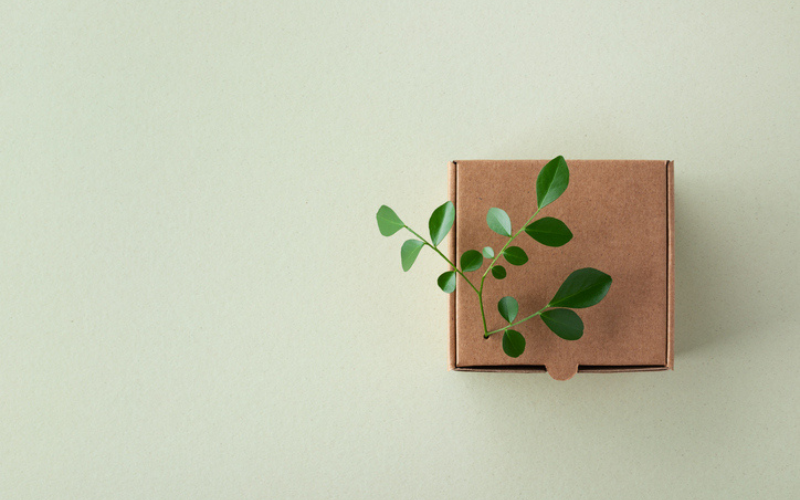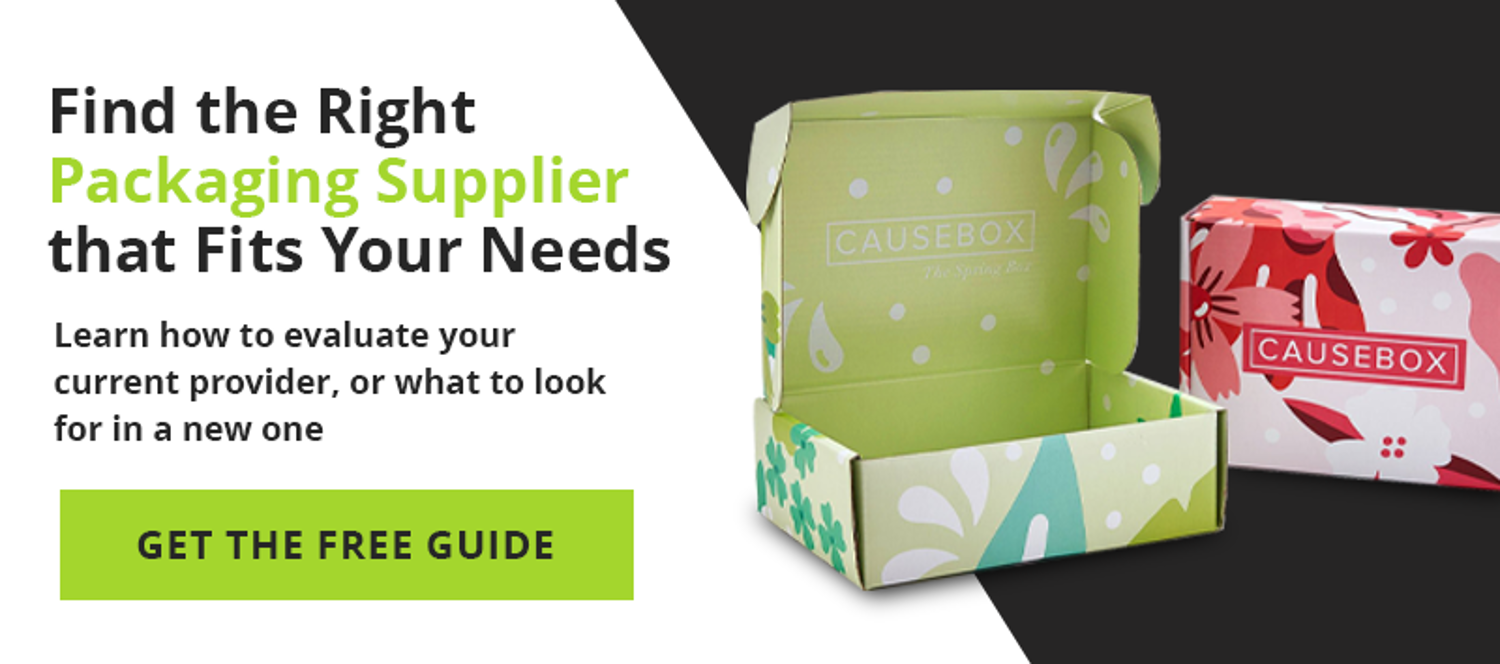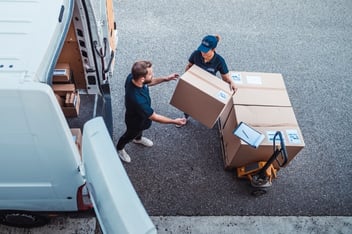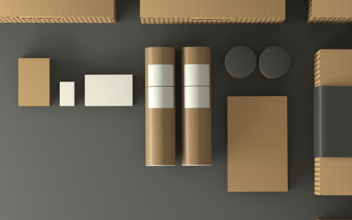The Number One Box Trend You Should Know About
Welcome to the future of packaging! As our world continues to prioritize sustainability, there is a growing demand for packaging that aligns with green values.
Gone are the days of excessive plastic, single-use materials, and wasteful packaging practices. Instead, a new trend toward sustainable and eco-friendly packaging is emerging. Consumers and businesses are both seeking packaging solutions that are not only functional and visually appealing, but also environmentally sound.
In this blog, we dive into how sustainable and eco-friendly packaging is reshaping the packaging industry and paving the way toward a more sustainable future.
What is Considered Eco-Friendly Packaging?
Eco-friendly, sustainable packaging refers to materials and practices with a minimal negative impact on the environment throughout their lifecycle. From sourcing to manufacturing, use, and disposal of packaging materials, packaging companies can help you understand the nuances of eco-friendly packaging and determine which is best for your products:
- Renewable and Recyclable Materials: Packaging made from renewable and recyclable materials, such as paperboard, corrugated cardboard, glass, metal, and certain types of plastics (e.g., pets or bioplastics), are considered more eco-friendly and sustainable compared to materials derived from fossil fuels or those that are not easily recyclable.
- Minimal Resource Use: Eco-friendly packaging minimizes the use of natural resources, such as water and energy, during the manufacturing process. It also reduces waste generation and promotes resource conservation.
- Low Carbon Footprint: Packaging that has a low carbon footprint—a minimal greenhouse gas emissions impact during production and transportation—is considered more sustainable. Packaging with a low carbon footprint includes materials produced using renewable energy sources, transported lower distances, and which emit fewer greenhouse gasses during production.
- Biodegradability and Compostability: Packaging that is biodegradable or compostable, which can naturally break down into harmless organic materials without leaving toxic residues, is considered more eco-friendly because it can help reduce the accumulation of waste in landfills and contribute to a circular economy.
- Reusability and Recyclability: Packaging designed for reuse, such as glass bottles or refillable containers, or packaging that is easily recyclable and widely accepted in recycling programs, is a more sustainable alternative to single-use options. Packaging that encourages consumers to recycle or repurpose the materials can help reduce waste and conserve resources.
- Social and Ethical Considerations: Eco-friendly and sustainable packaging may also apply to social and ethical considerations like fair labor practices, responsible sourcing of raw materials, and support for local communities and economies.
Eco-friendly and sustainable packaging aims to minimize negative impacts on the environment, conserve resources, reduce waste, and promote a circular economy that prioritizes sustainability and long-term environmental health.
The Eco-Friendly Box Trend: What Consumers Want
Eco-friendly packaging, including eco-friendly boxes, is trending in the world of packaging because consumers want it. With a growing awareness of environmental issues and concerns about the environment, consumers are actively seeking packaging solutions that are more sustainable, recyclable, and biodegradable.
Research shows consumers are increasingly concerned about the environmental impact of packaging materials, such as plastic, on wildlife, oceans, and the overall ecosystem. They are actively seeking packaging options made from renewable, recyclable, or compostable materials to minimize their environmental footprint.
Buyers are also looking for ways to reduce waste and promote a circular economy, where materials are recycled or repurposed rather than ending up in landfills or oceans. Eco-friendly boxes and other types of packaging, like those made from recycled materials or are easily recyclable, align with the desire to reduce waste and promote sustainability.
In Europe, retailers are required to take back packaging after the purchase, which has caused a visible rise in the advocacy for greener packaging on the part of EU stores.
This current demand is beneficial for sellers, consumers, and the planet. Many consumers are more likely to choose products from brands that prioritize environmental sustainability and use eco-friendly packaging. As a result, brands that adopt eco-friendly packaging options can gain a competitive advantage by meeting consumer demand for sustainable packaging and appealing to environmentally conscious customers.
Are Eco-Friendly Boxes Affordable?
Due to increased demand and shifting packaging trends, eco-friendly packaging materials are nearly as affordable as less sustainable options. As more consumers demand eco-friendly packaging—and as more brands prioritize sustainability—there has been a growing market for eco-friendly materials, which continues to drive costs down.
This increased demand has led to innovations in production technologies, economies of scale, and increased competition among manufacturers, which have collectively contributed to reducing the costs of eco-friendly packaging materials. Additionally, advancements in recycling and waste management infrastructure have made it more feasible to recycle and repurpose eco-friendly packaging materials, creating a circular economy that further enhances their cost-effectiveness.
Brands now have access to a wider range of affordable eco-friendly packaging material options that are both environmentally responsible and economically viable, making sustainable packaging a feasible and attractive choice for businesses looking to meet consumer demand for eco-friendly packaging solutions.
Related Content: Best Packaging Design Trends for 2023
Getting on Board: 5 Steps to Design Your Sustainable Packaging
Choosing and designing eco-friendly boxes hand in hand with an experienced packaging design company can be a strategic approach to creating sustainable packaging solutions and creating a loyal customer base. Here are five tips to consider:
- Material selection: Work closely with your packaging design company to select eco-friendly materials that align with your sustainability goals. These may include materials like recycled paper or cardboard, bioplastics, or other renewable and compostable materials. Your packaging design company can provide guidance on the availability, cost, and suitability of different eco-friendly materials for your specific packaging needs.
- Design for recyclability: Collaborate with your packaging design company to create packaging designs that are optimized for recyclability. This process may involve avoiding complex designs with multiple materials that are difficult to separate, using minimal coatings or laminations that can impede recyclability, and incorporating clear recycling symbols or instructions on the packaging to guide consumers.
- Size and weight optimization: Efficiently utilizing space and minimizing material usage can contribute to eco-friendly packaging. Work with your packaging design company to optimize the size and weight of your boxes, considering factors like transportation efficiency, material waste reduction, and storage space utilization.
- Life cycle analysis: Consider the environmental impact of your packaging throughout its entire life cycle, from raw material extraction to end-of-life disposal. Your packaging design company can help conduct a life cycle analysis to assess the environmental impact of different packaging options, allowing you to make informed decisions about the most sustainable choices.
- Innovation and creativity: Embrace innovation and creativity in your packaging design process to come up with unique and appealing eco-friendly packaging solutions. Work closely with your packaging design company to explore new design concepts, materials, and techniques that can make your packaging stand out while still being environmentally responsible.
Lean on your packaging company for its expertise, creativity, and knowledge of sustainable materials and design principles to create eco-friendly boxes that are visually appealing, functional, and environmentally responsible.
Takeaway
The rise of eco-friendly boxes as the biggest trend in packaging is not just a passing fad, but a necessary shift toward a more sustainable and responsible approach to packaging. As consumers grow more aware of the environmental impact of packaging materials, businesses are realizing the importance of incorporating eco-friendly packaging solutions into their operations.
Eco-friendly boxes not only reduce the harmful effects of traditional packaging on the environment, but they also cater to the growing demand for environmentally conscious products among consumers. By opting for eco-friendly boxes, businesses can not only reduce their carbon footprint, but also enhance their brand reputation and contribute to a greener future for our planet.




.jpg?width=352&name=71PRu0tsOtL._AC_SL1500_%20(3).jpg)

